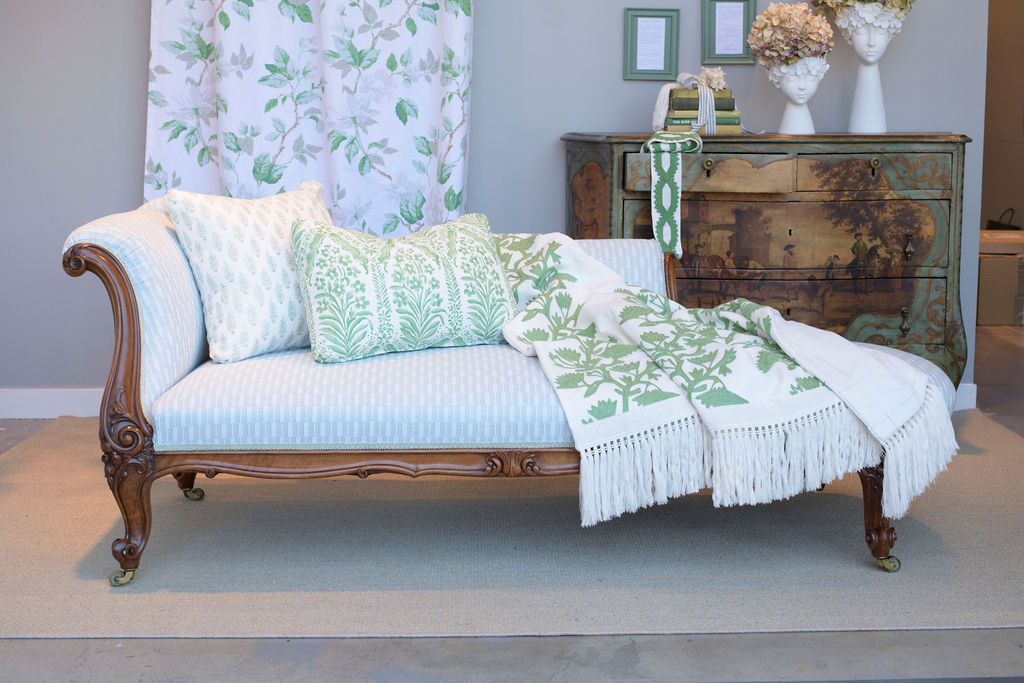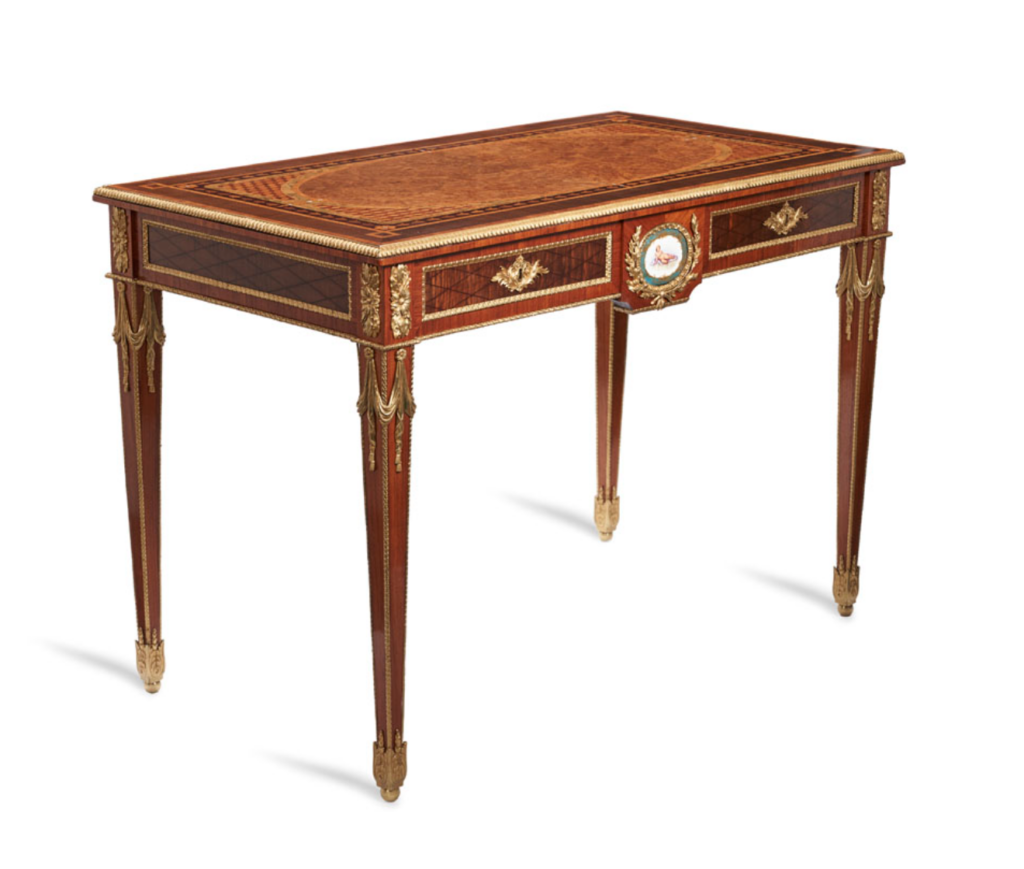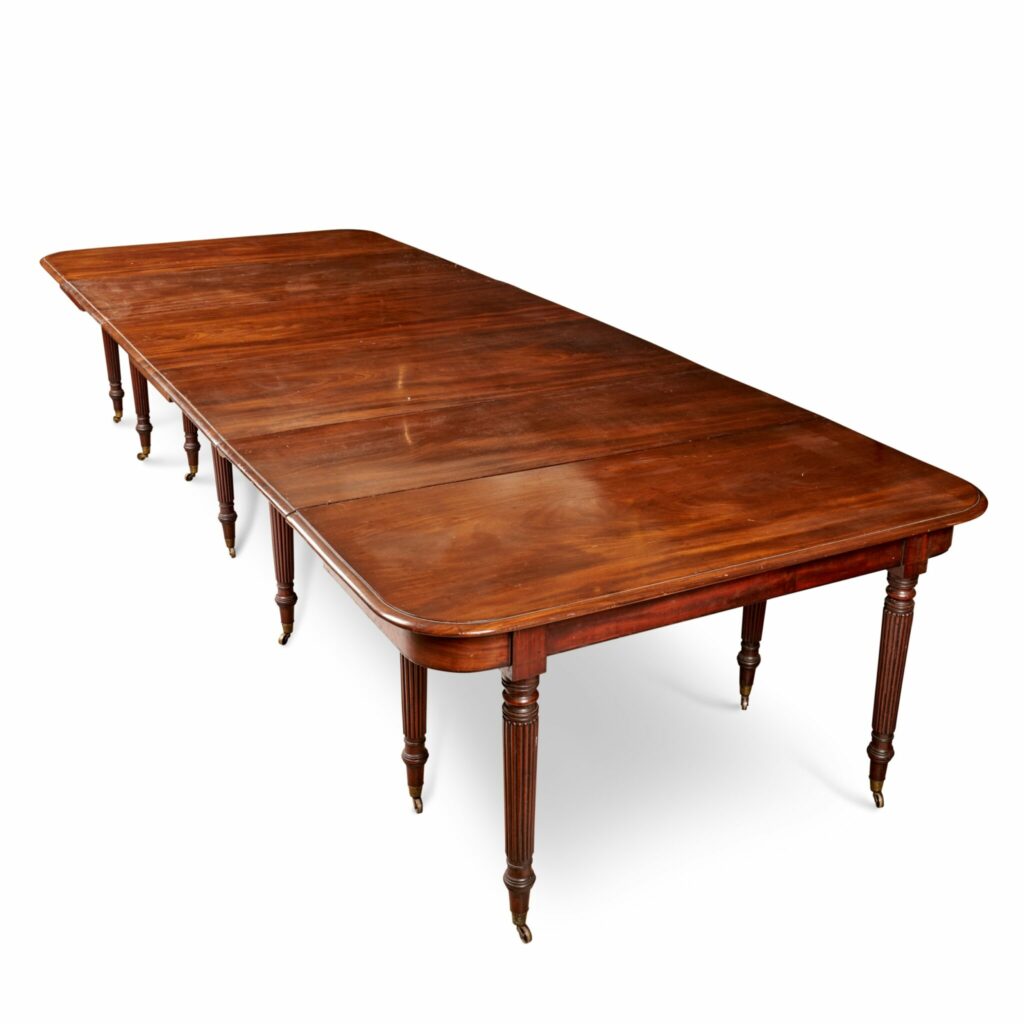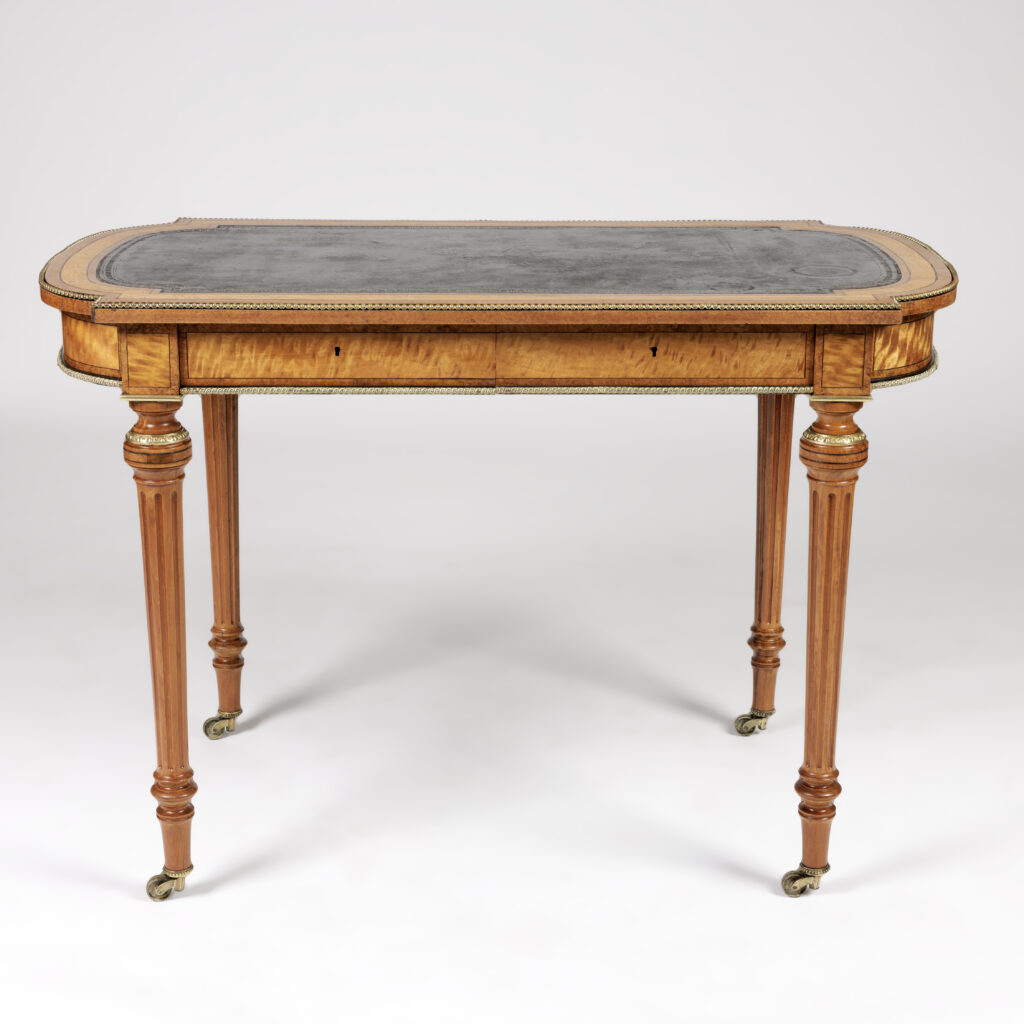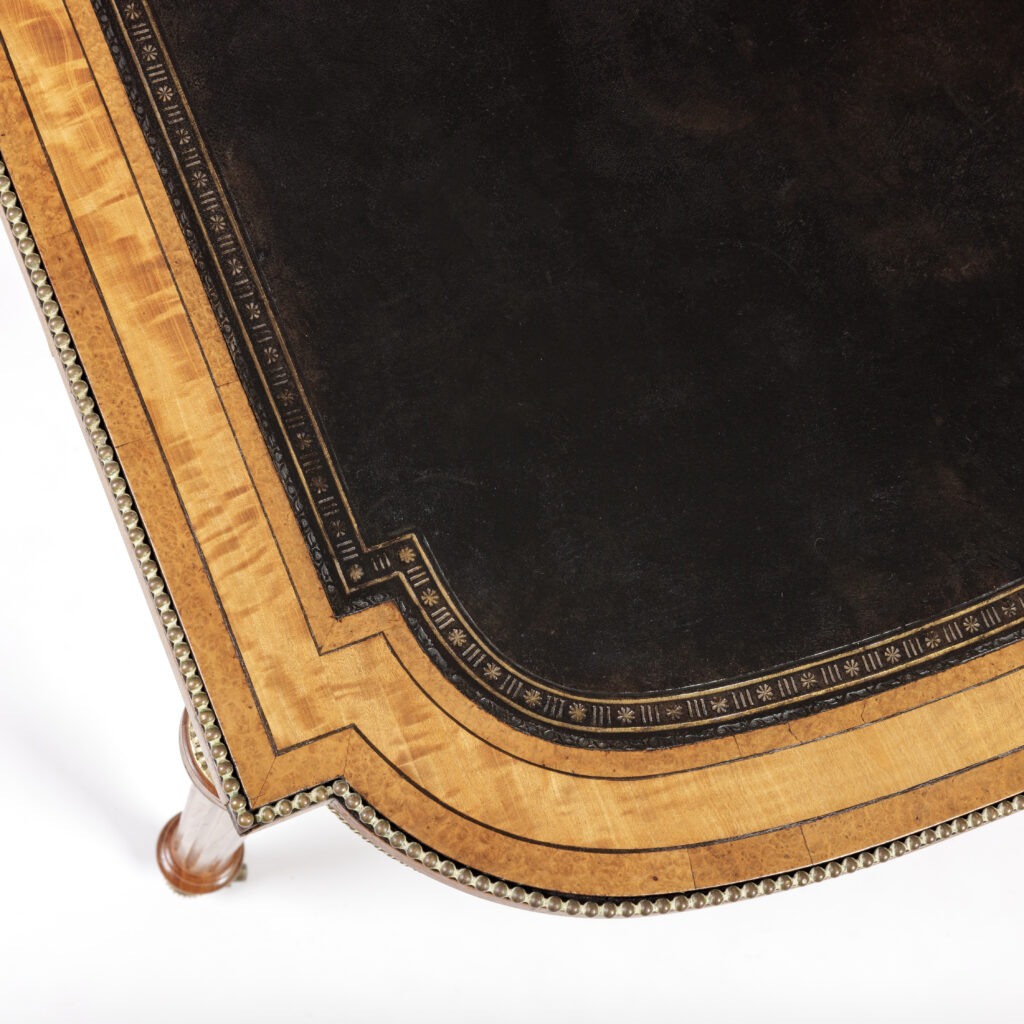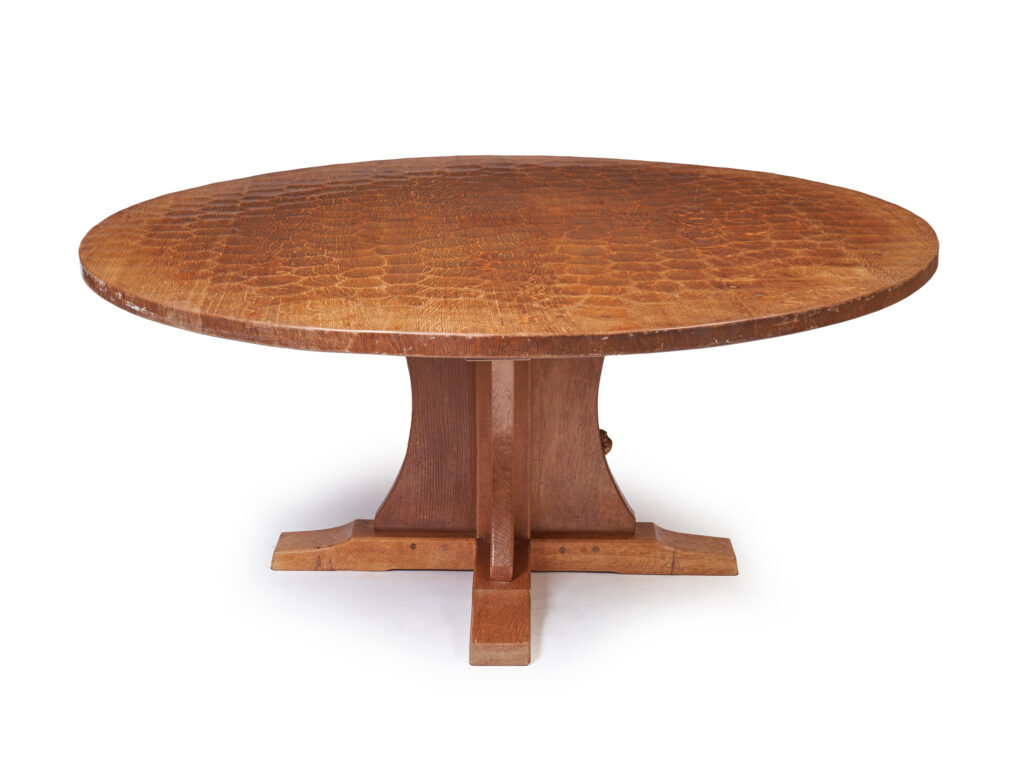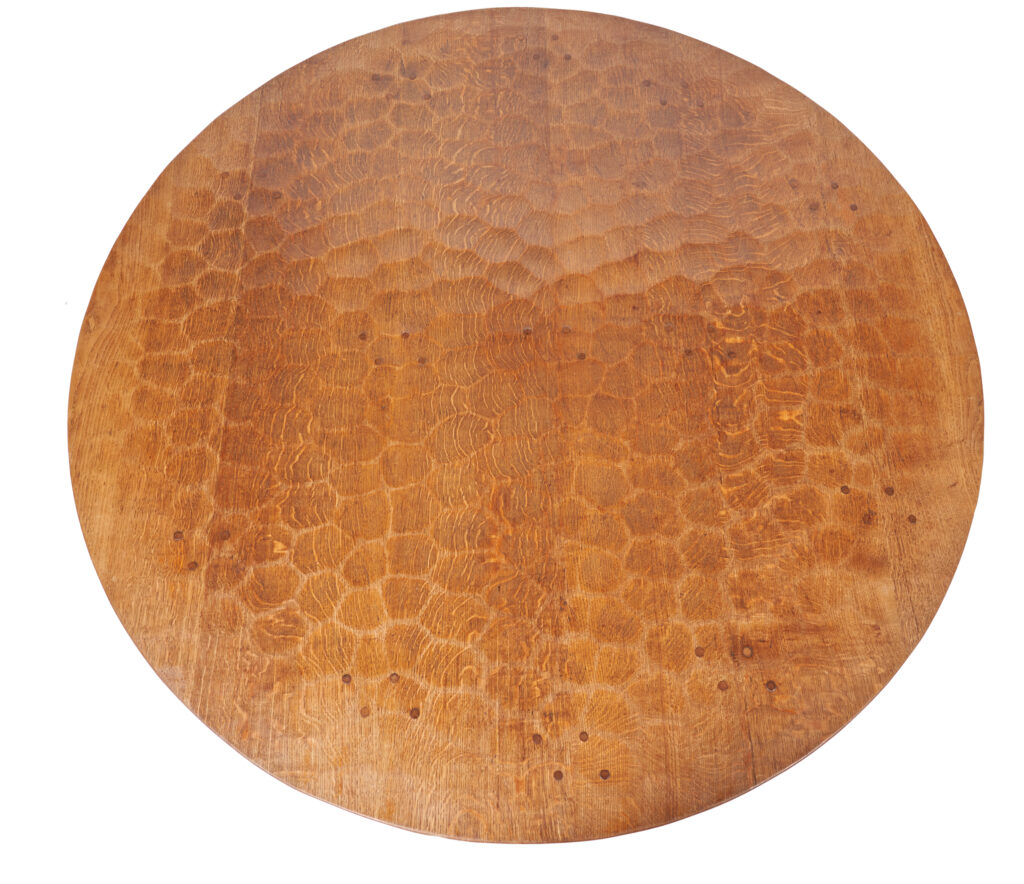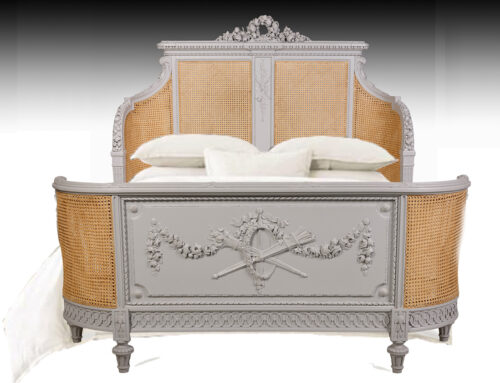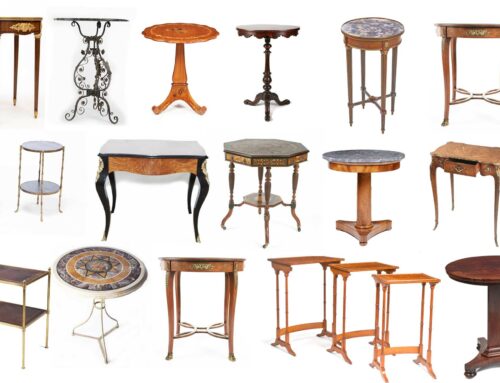Antique English Furniture: Cabinetmaking by the top English cabinetmaking firms during the 19th century was quite simply remarkable, in its quality, design and technique.
The 19th century was a period of tremendous technological innovation resulting from the industrial revolution, which produced outstanding examples of cabinetmaking and furniture design. Holland and Sons, Gillows, Wright & Mansfield, Baldock, Buhl, Blake and Morant just to name a few. Today we celebrate some of our favourite English cabinetmakers – true artists whose quality of workmanship can be defined as some of the finest furniture examples made in history. We are thrilled to have had and still have several examples of their magnificent work in our collection today.
Holland and Sons
Holland and Sons, leading cabinetmaking rival to Gillows of Lancaster during the 19th century. Notable commissions included Osbourne House in 1845 and commissions for Windsor Castle, Balmoral and Marlborough House.
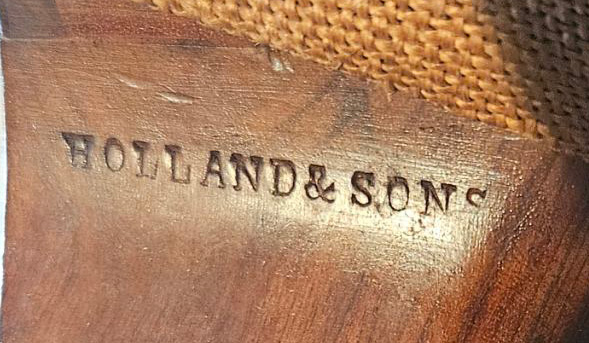
They also produced works for leading institutions such as the British Museum and the new Houses of Parliament. Founded by William Holland and Stephen Taprell in 1803, the firm later became known as Holland & Sons in 1843. Signed by Holland & Sons, this beautiful English walnut chaise is another current example in our collection of the cabinetmaking firm’s beautiful quality workmanship. Beautifully selected figured walnut has been used for carving and the original makers stamp rests hidden underneath the leg. Enquire about this chaise longue.
Attributed to Holland and Sons, the below table featured in the Wallrocks collection in 2016 and is similar, if not identical, to one photographed in 1912 in Queen Alexandra’s sitting room at Marlborough House, the photo featured in page 390 of Christopher Payne’s latest book ‘British Furniture – 1820 – 1920: The Luxury Market’.
- A table fit for a queen.
- The impeccable detail and overall rarity of a Holland & Sons table such as this makes it highly sort after for antique collectors and enthusiasts alike.
Gillows of Lancaster
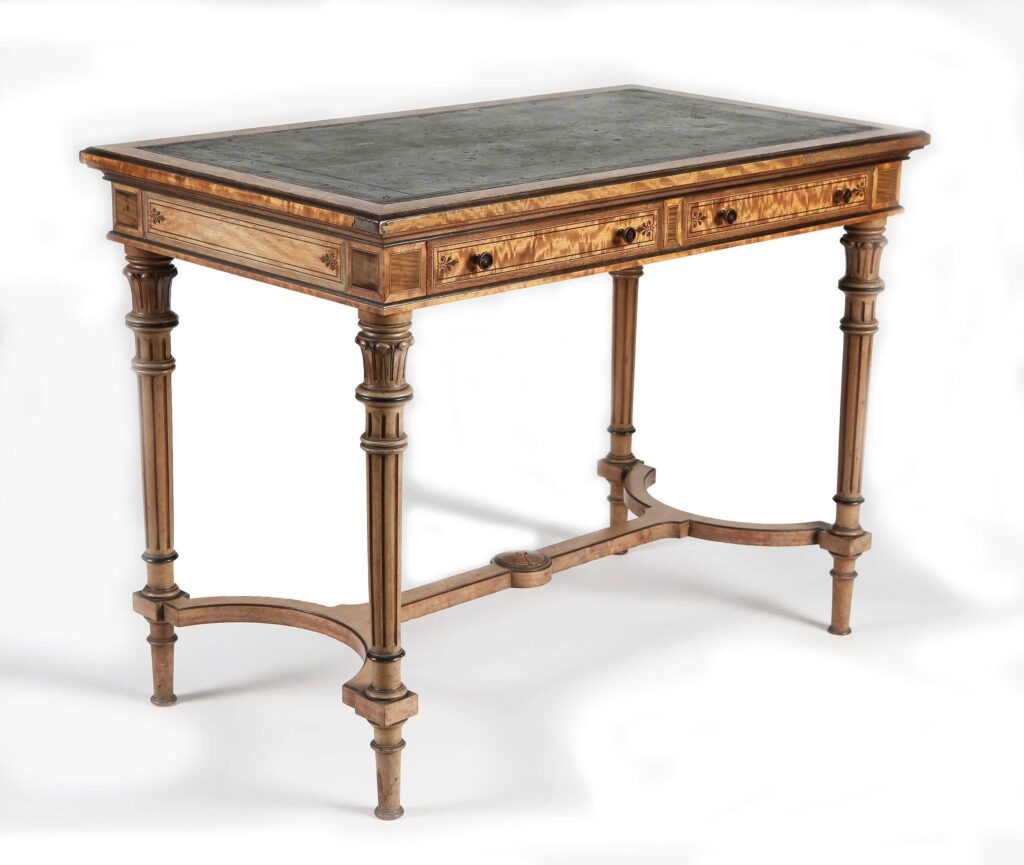 Stamped Gillows 3185 and in original condition, this beautiful fiddleback satinwood with purple-heart writing table is a wonderful example from the Wallrocks collection of antique English furniture. Perhaps the most well known, of English makers Robert Gillow was born on 2 August 1704 in Lancashire and founded the luxury furniture firm Gillows of Lancaster in 1730, following his apprenticeship as a joiner and cabinet maker. As a very young man he sailed to the West Indies as a ships carpenter, and it was in Jamaica that he became interested in mahogany, bringing samples back to England in 1720. This is reputed to be the first mahogany to be brought to British shores.
Stamped Gillows 3185 and in original condition, this beautiful fiddleback satinwood with purple-heart writing table is a wonderful example from the Wallrocks collection of antique English furniture. Perhaps the most well known, of English makers Robert Gillow was born on 2 August 1704 in Lancashire and founded the luxury furniture firm Gillows of Lancaster in 1730, following his apprenticeship as a joiner and cabinet maker. As a very young man he sailed to the West Indies as a ships carpenter, and it was in Jamaica that he became interested in mahogany, bringing samples back to England in 1720. This is reputed to be the first mahogany to be brought to British shores.
He continued to charter ships to import the slow grown mahogany providing him solid timber of exquisite quality, which was not otherwise available at that time. His firm quickly established the reputation of supplying high quality furniture to some of the wealthiest families in the country, and they specialised in unusual veneers and painted designs such as japanning.
By 1764, a permanent London branch of Gillows had been established in Oxford Street by his son Thomas, and following his retirement in 1769, the firm was managed by his two sons, who continued its trade well past his death in 1772, and then by succession into the early 19th century.
 Several other examples of antique English furniture exist in the collection include the below Gillows bureau plat – English in the French taste and stamped Gillows 16315. The bulbous top above a shaped frieze and embellished with exceptional quality ormolu mounts.
Several other examples of antique English furniture exist in the collection include the below Gillows bureau plat – English in the French taste and stamped Gillows 16315. The bulbous top above a shaped frieze and embellished with exceptional quality ormolu mounts.
The Regency Imperial Action dining table pictured below is also probably by Gillows.
- English Regency Imperial Action Dining Table Firmly Attributed to Gillows
Edwards and Roberts
Edwards and Roberts were a distinguished English cabinetmaking firm that gained prominence for exquisite antique English furniture in the 19th century. Established in London, their pieces were fine in quality, showcasing intricate marquetry, ornate inlays, and fine craftsmanship. Their designs often featured mahogany, satinwood, and other luxurious materials, contributing to the enduring appeal of their furniture.
This writing table from the Wallrocks collection is a wonderful example of their work, with carefully hand-selected fiddleback satinwood veneers of the finest quality with ebony string inlays. Enquire about this Edwards & Roberts Writing Table
- 19th Century English Satinwood Writing Table by Edwards & Roberts
Robert (Mouseman) Thompson
And finally, one for interests sake, Robert (Mouseman) Thompson, also known as ‘Mousey’ Thompson, was a British furniture maker known for antique English furniture oak creations that exude the simple elegance and charm of the Arts & Crafts era. He was born and lived in Kilburn, North Yorkshire, England, where he set up a business manufacturing oak furniture, which featured a carved mouse on almost every piece.
It is claimed that the mouse motif came about accidentally following a conversation about “being as poor as a church mouse”, which took place between Thompson and one of his colleagues during the carving of a cornice for a screen. This chance remark led to him carving a mouse and this remained part of his work from this point onwards.
Today, highly prized for its quality of craftsmanship, Mouseman furniture is considered immensely popular as one of the antique English furniture genres, as buyers are drawn to the functional beauty, simplicity and reassuring solidity of the designs.
This photo of the famed ‘mouse’ is from our collection of antique English furniture which rests on the side of the centre pedestal as if running up the leg. The top surface of the table has been adzed – thereby creating the appearance of a rippling body of water as one circles the table. A marvellous example of its kind.
- A unique makers mark indeed! The signature carved “mouse” of Thomas “Mouseman” Thompson) forever present beneath the table.
The reality however is that most furniture was not stamped, even very fine quality pieces and as such it is essential not to overlook a piece that remains unsigned, but instead to look to the quality as the giveaway.


